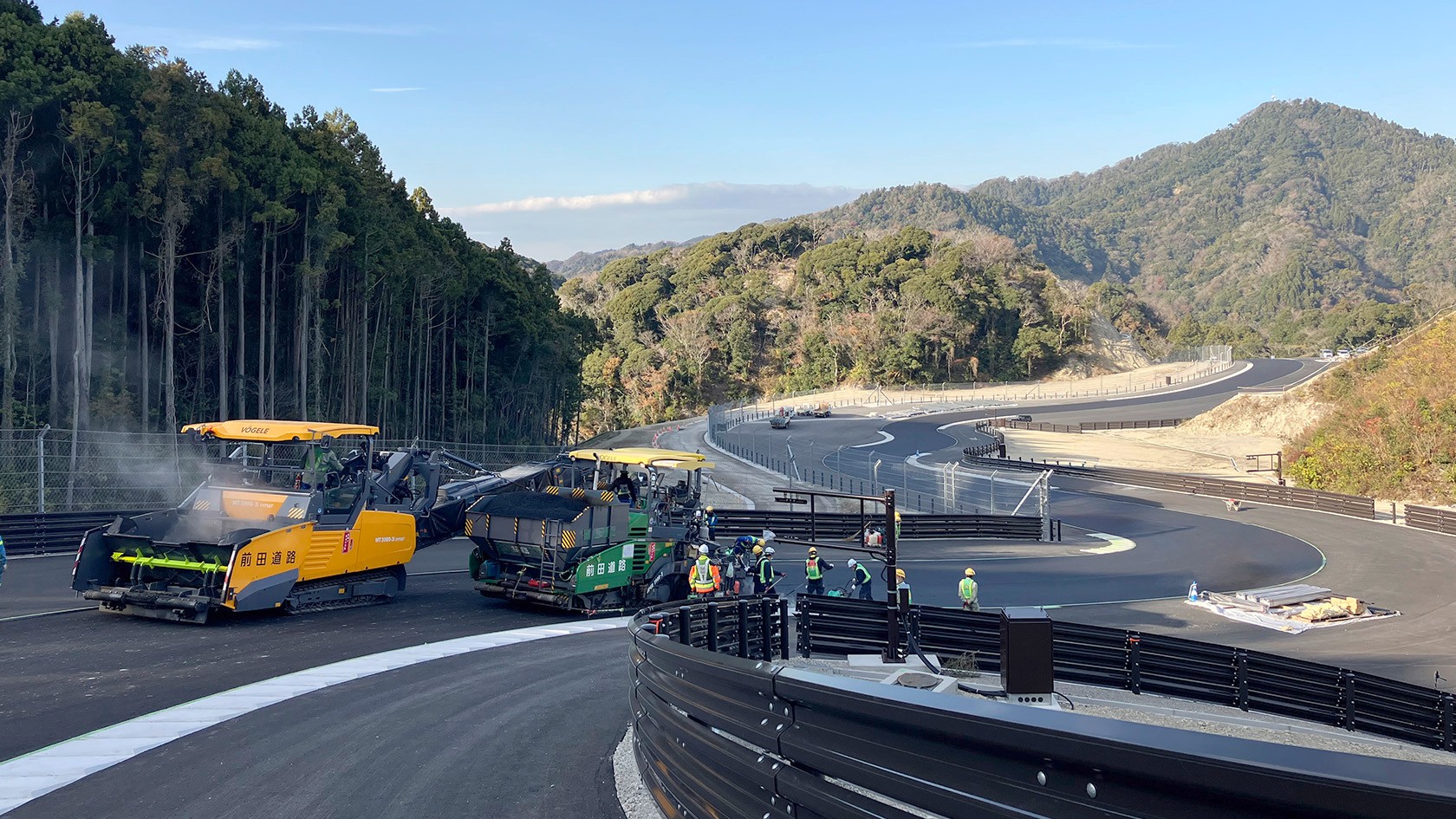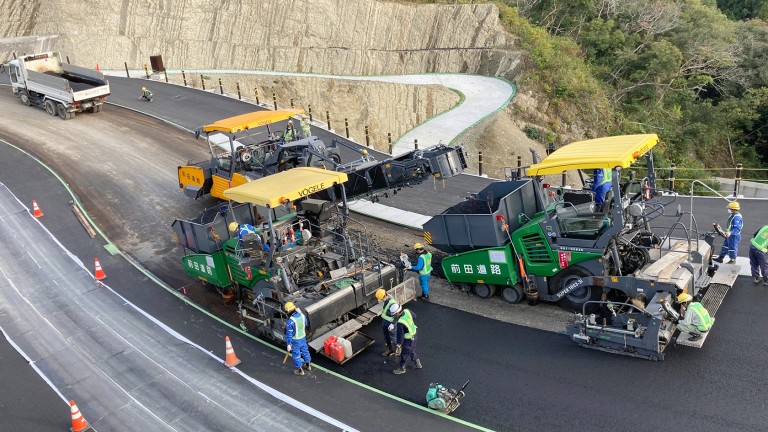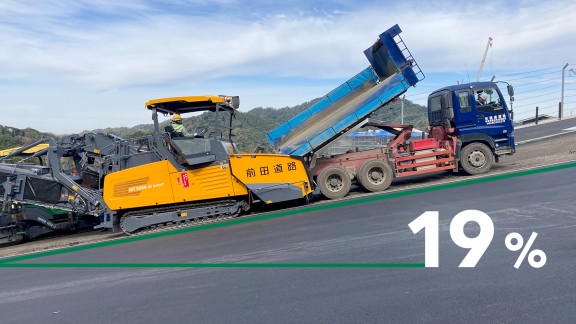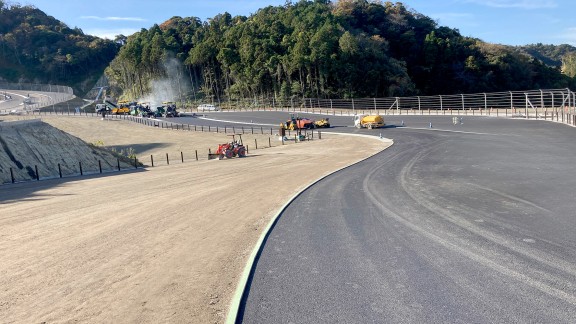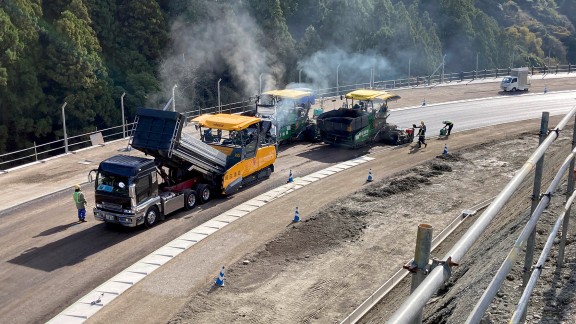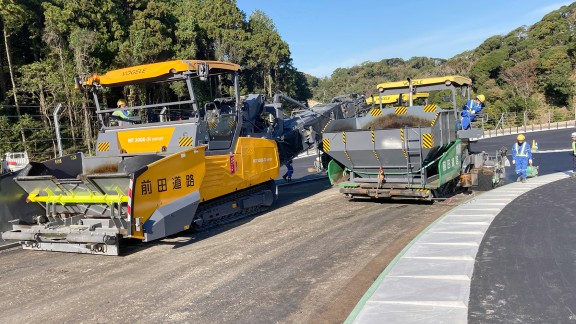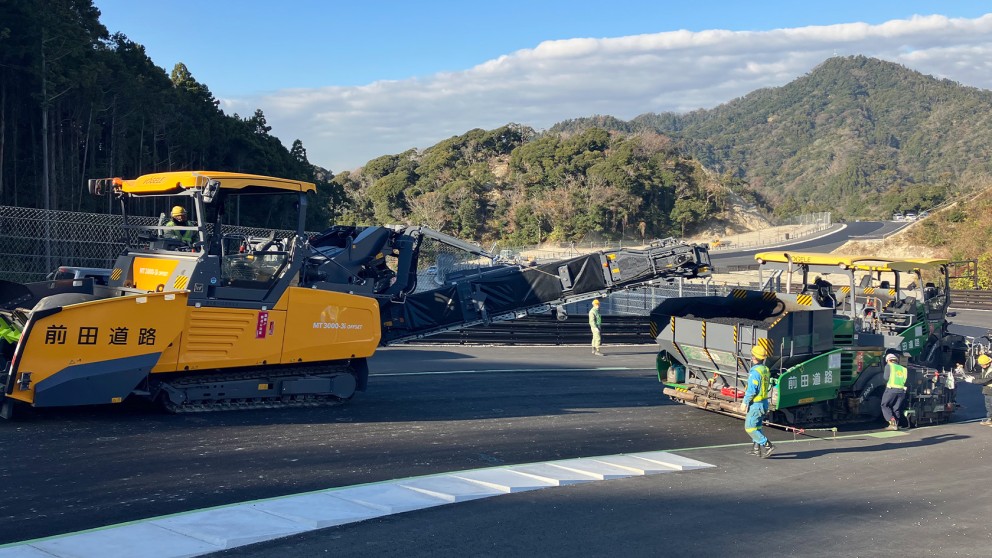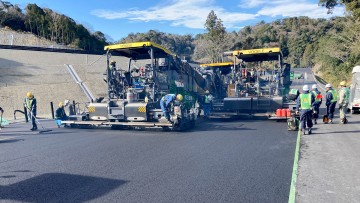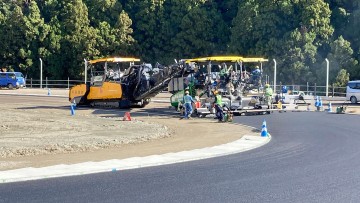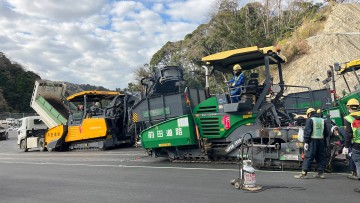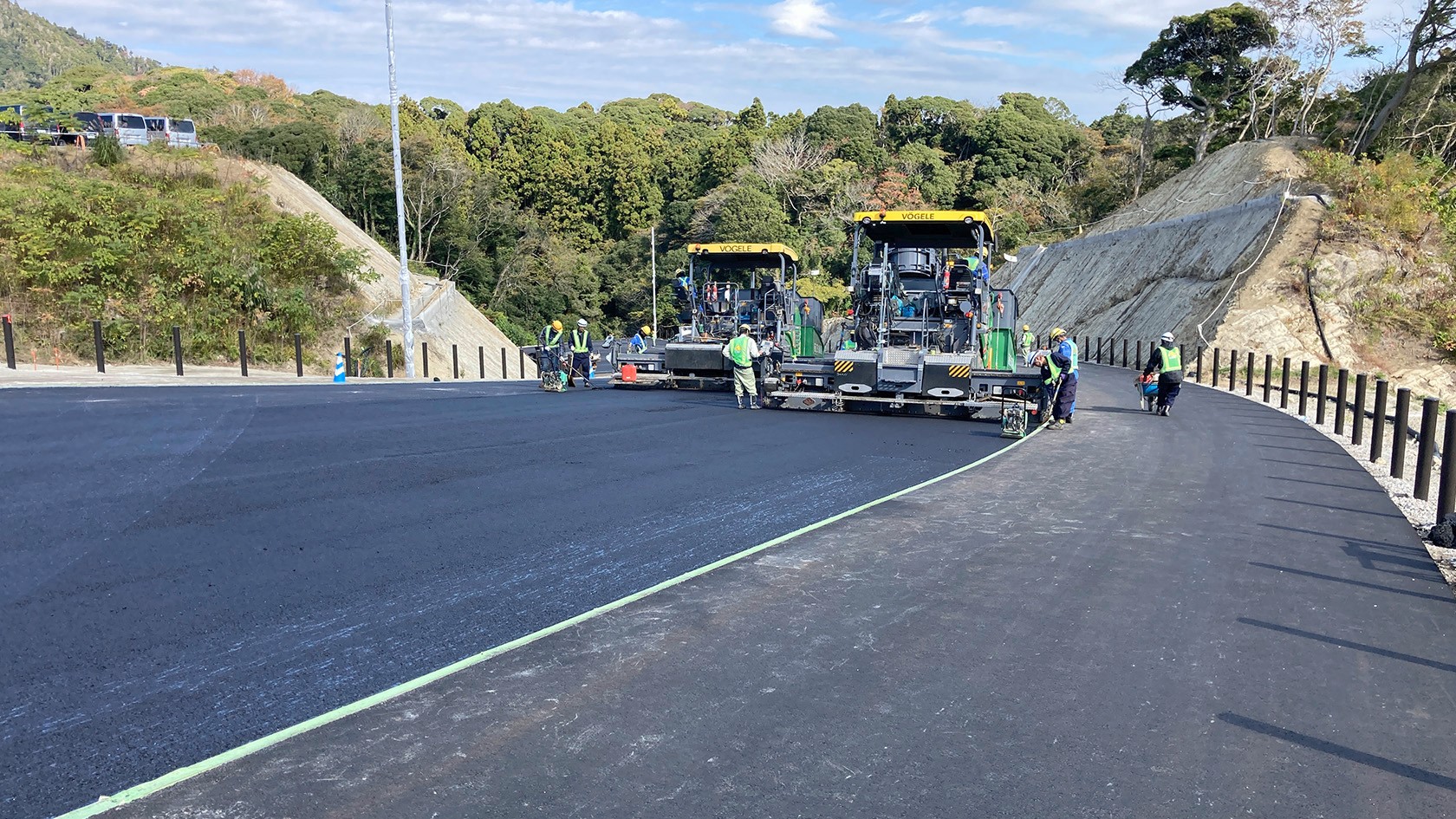Four layers on about 100,000 m² (120,000 sq.yds.)
The SUPER 1800-3i and the SUPER 1803-3i paved the race track itself. They laid the asphalt over a surface area of 100,000 m² (120,000 square yards), across a width of between 8 and 12 meters (26.2 and
It consists of an 18 cm (7.1 in.) thick unbound base course and a 12 cm (4.7 in.) bound base course, topped by a 6 cm (2.36 in.) binder course and a 4 cm (1.6 in.) surface course. In addition to the 3.5 km (2.2 mile) long circuit covering an area of 36,000 m² (43,000 square yards), the asphalt work also included 60,000 m² (72,000 square yards) of run-off zones, as well as the pit lane and service roads. These ancillary surfaces, as well as the base courses, were paved primarily by a tried and proven SUPER 1900-2 model paver, which Maeda Road Construction has been operating successfully for many years.
MT 3000-3i Offset PowerFeeder paves the way to quality
Besides the pavers, another Vögele machine was also crucial in achieving the high standard of paving quality: the MT 3000-3i Offset material transfer vehicle. The PowerFeeder decouples the material transfer from the truck to the paver, so ensuring a consistent and efficient paving process, and high-quality results.
In the MT 3000-3i Offset’s large-capacity receiving hopper, the mix is conveyed transversely by conical augers, which results in it being thermally homogenized. With an effective heating system that heats the conveyor and the transfer points, the material transfer vehicle actively counteracts cooling and segregation of the mix. That’s why the Vögele PowerFeeder is often used on jobsites like the one in Minamiboso, where the highest quality is demanded, and tight schedules have to be met.
